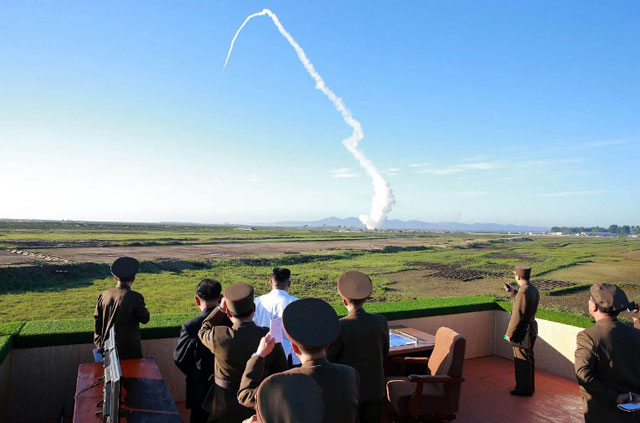
Paris, France | AFP | The doctrine of nuclear deterrence, put to the test in the standoff between Washington and Pyongyang, dates to the Cold War when the world’s two superpowers seemed hellbent on “mutually assured destruction”.
The arms race between United States and the then Soviet Union saw a proliferation of nuclear warheads as well as their vectors — missiles, planes and submarines.
On the eve of the collapse of the Soviet Union in 1990, the Soviet arsenal boasted some 37,000 warheads, compared with nearly 22,000 warheads in the United States, according to the Bulletin of the Atomic Scientists (BAS).
Today, thanks to a series of multi-lateral and bilateral treaties, those numbers have dropped to around 7,000 and 4,480 respectively — still more than enough to assure nuclear suicide for both sides.
“The nuclear weapon, invented 70 years ago, has shown itself to be an effective means of preventing war since there has been no conflict between major powers since then,” said researcher Bruno Tertrais of the Paris-based Foundation for Strategic Research.
“There has never been open conflict between nuclear powers and no country with nuclear weapons has ever been invaded,” he added in a report.
Similarly, “no country protected by the nuclear umbrella has ever suffered a massive military attack,” he wrote, referring to NATO’s 29 member states.
But critics of the deterrence doctrine reject these arguments, saying it is a theory that cannot be tested.
Moreover, they argue that the interdependence of the world’s economies and the influence of international institutions have been the overriding guarantors of peace between the big powers since World War II.
– Two hair-raising tests –
The policy has faced two serious tests — the 1962 Cuban missile crisis and a hair-trigger confrontation between India and Pakistan 40 years later.
In 1962, at the height of the Cold War, an American spy plane detected Soviet medium-range ballistic missile installations on the territory of Soviet ally Cuba just miles off the Florida coast.
 The Independent Uganda: You get the Truth we Pay the Price
The Independent Uganda: You get the Truth we Pay the Price



